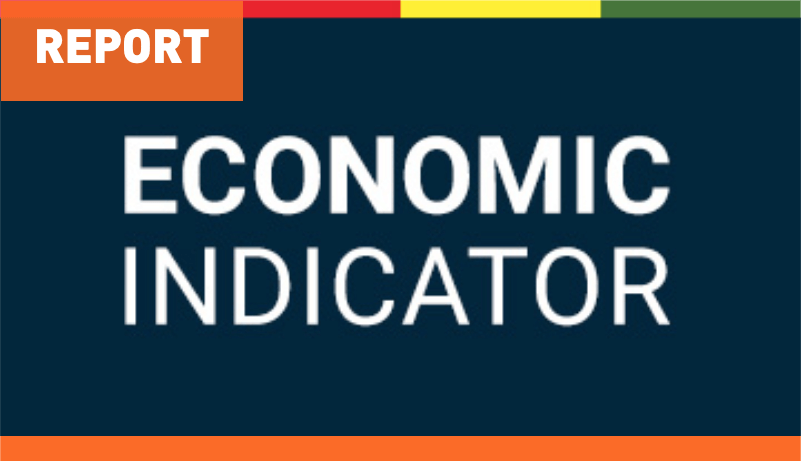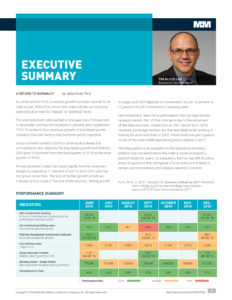2016 4th Quarter Economic Indicators

A Return to Normalcy
by: Salim Furth, Ph.D.
As of the end of 2016, economic growth has been normal for at least a year. With a few exceptions, data indicate an economy
operating at or near its “natural” or “potential” level.
The unemployment rate reached a nine-year low of 4.6 percent in November and has not exceeded 5 percent since September 2015. Experience from previous periods of sustained growth indicates that little further improvement can be expected.
Gross domestic product (GDP) is growing at a steady but unimpressive rate. Adjusted for population growth and inflation, GDP grew 0.8 percent from the third quarter of 2015 to the third quarter of 2016.
Private domestic investment grew rapidly from its recession trough but peaked at 17 percent of GDP in early 2015 and has not grown since then. The lack of further growth is both an indicator and a cause of the end of the recovery: Strong growth in wages and GDP depends on investment. At just 16 percent to 17 percent of GDP, investment is treading water.
Like investment, labor force participation has not reached prerecession levels. Part of that change is due to the retirement of the baby boomers: People born in 1951 turned 65 in 2016. However, prime-age workers are also less likely to be working or
looking for work now than in 2007. Persistently low participation is one of the main challenges facing policymakers in 2017.
Monetary policy is an exception to the prevailing normalcy. Inflation has remained below the Federal Reserve Board’s 2 percent target for years. Consequently, the Fed has left its policy levers in positions that are typical of a recovery and is likely to remain accommodative until inflation reaches 2 percent.
Furth, Ph.D., S. (2017, January 13). Economic Outlook for 2017. Retrieved from heritage.org: http://www.heritage.org/research/reports/2017/01/economic-outlook-for-2017

